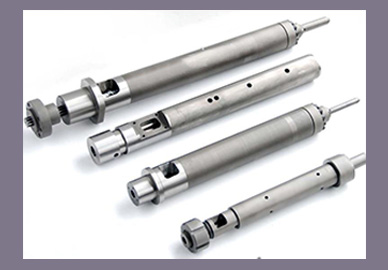
In the extrusion process, when the plastic melt enters the flow path of the head from the spiral groove, the flow pattern of the plastic melt changes drastically from spiral ribbon flow to straight flow. In order to obtain better extrusion quality, it is required that the material flow enter the machine head from the extruder screw as smoothly as possible, and more importantly, the generation of stagnation should be prevented.
Tests have shown that when two colorants of different colors are added to the hopper at a time, the lag flow of the first colorant can be found at the head of the removed screw after the second colorant has been put in for a long time. This is due to the slower flow rate of the melt at the head of the screw or due to the presence of this swirling flow (Figure 8-14). For plastics with poor thermal stability, the stagnation of the screw head tends to be the source of thermal decomposition.
The commonly used head shape is shown in Figure 8-15. The semicircular head 1 and the cone 2 are generally used for polyolefins with better thermal stability; the tip 3 is mainly used for hard polyvinyl chloride plastics with poor thermal stability; in order to eliminate the stagnation of the screw head , sometimes with a hoe 6; threaded tip 4 and torpedo 5 are currently used very little, the former is mainly used in the cable industry.
The latter is beneficial to promote plasticization and promote smooth flow, but it also causes unnecessary increase in the temperature of the molten material, which is due to the small gap (about 40%-50% of the groove depth H3 in the metering section). ) The shearing effect is strong and a great deal of mechanical work is caused by heat energy.